DS-ART POPUP -
Data Science for Society
On 10-12 March 2022 University of Haifa Data Science Research Center held a unique event:
DS-ART POPUP Data Science for Society | מדעי הנתונים למען האנושות In the cafe-gallery Kibutz Galuyot 91, Haifa
The important work of researchers at the Data Science Research Center at the University of Haifa has led Prof. Peleg, head of the center, to look for ways to make the projects accessible to the public, in an artistic and interesting way. To that end, Prof. Peleg chose to present six of the dozens of studies supported by the research center. All of these projects are using data for humanity: three studies focus on ancient civilizations and three on mental health.
During 2021, a number of meetings were held at Kibbutz Galuyot 91 Gallery, between Prof. Mor Peleg, Tamir Gadot (the center’s administrative director), and Anat Har-Gil, the gallery’s owner, artist and exhibition curator, who provides a warm home and stage for local art and culture. In the meetings, ideas and suggestions were raised, tasks were assigned, a process of gathering relevant materials began and the project started to form shape. The design ideas that are embodies in the research project and original images from the works have been assembled into a spectacular graphic format by graphic designer Idit Nevo.
In June 2021, a brainstorming workshop was held with representatives of the selected project. The result of the meetings and workshop were presented in an exhibition held at the gallery between March 10-12 and included an opening event attended by about 250 people in which representatives of the research teams presented the works in an interactive manner. In the exhibition, each study is described as a “fictitious profession”: Treasure Hunter – how to identify the location of underwater archeological sites using sonar and imaging data? Urn Healer – How to automatically reassemble antique urns from remains ? Literacy Guide – How to discover topics and trends discussed in ancient texts in non-native languages ? Anemone Architect – Can we test drugs that affect the human brain on brainless animals based on sequence and 3D structure homology? Match Maker – How can we improve the caregiver-patient relationship by detecting synchrony of eye gaze and facial expressions of video data? Dream Catcher – How do we identify people at risk for stress and trauma based on their sleep data?
Exhibition conception: Mor Peleg; Curator: Anat Har-Gil; Graphic designer: Edit Nevo
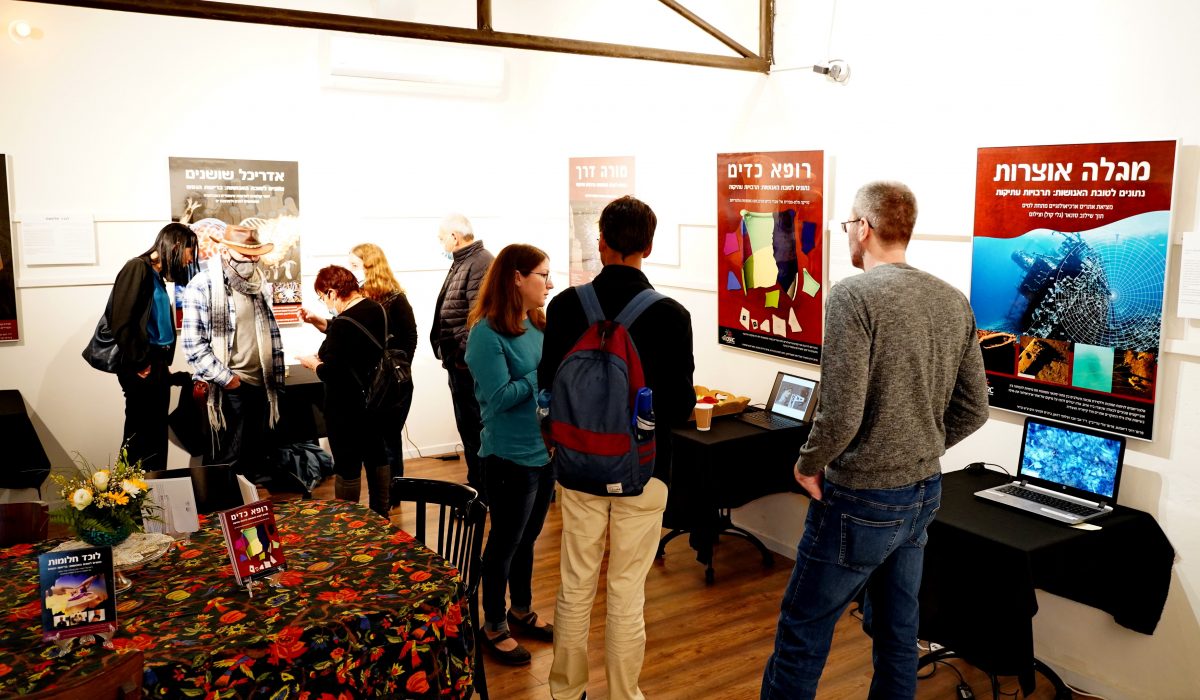
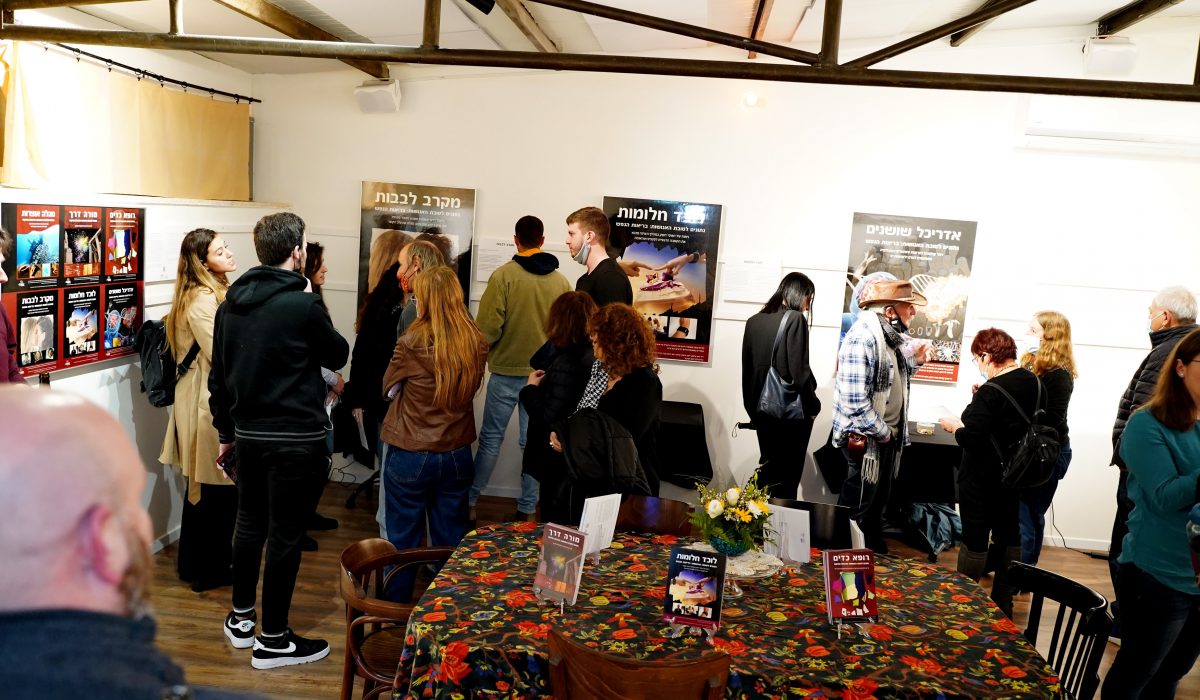

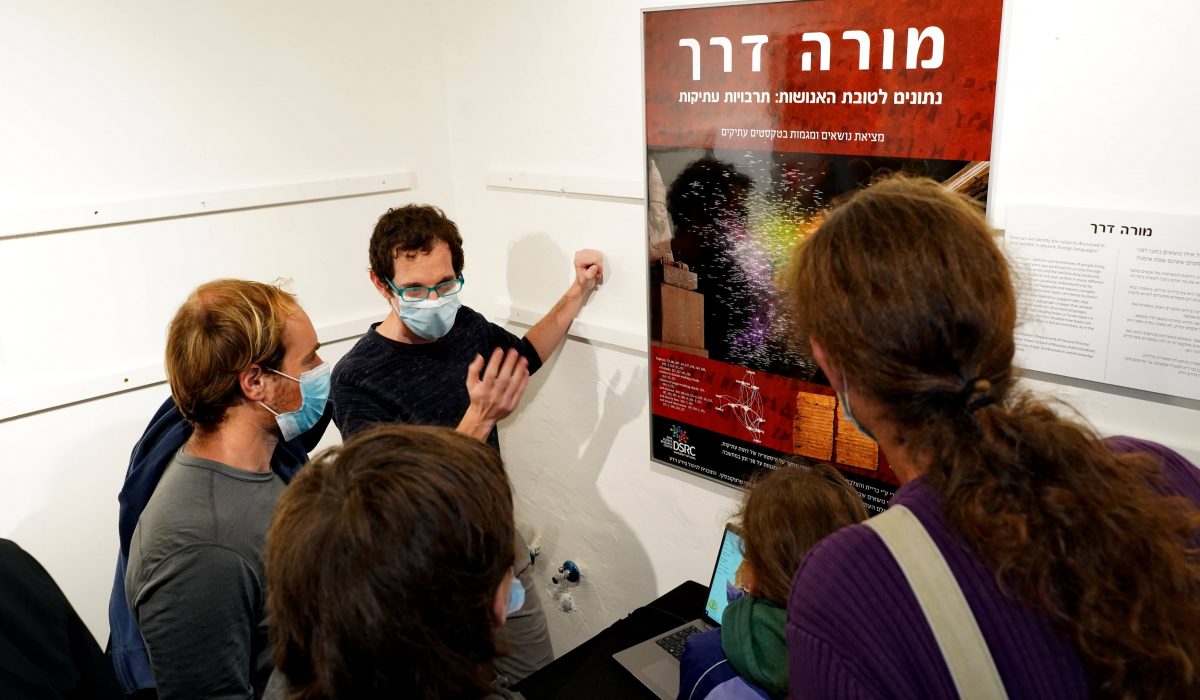
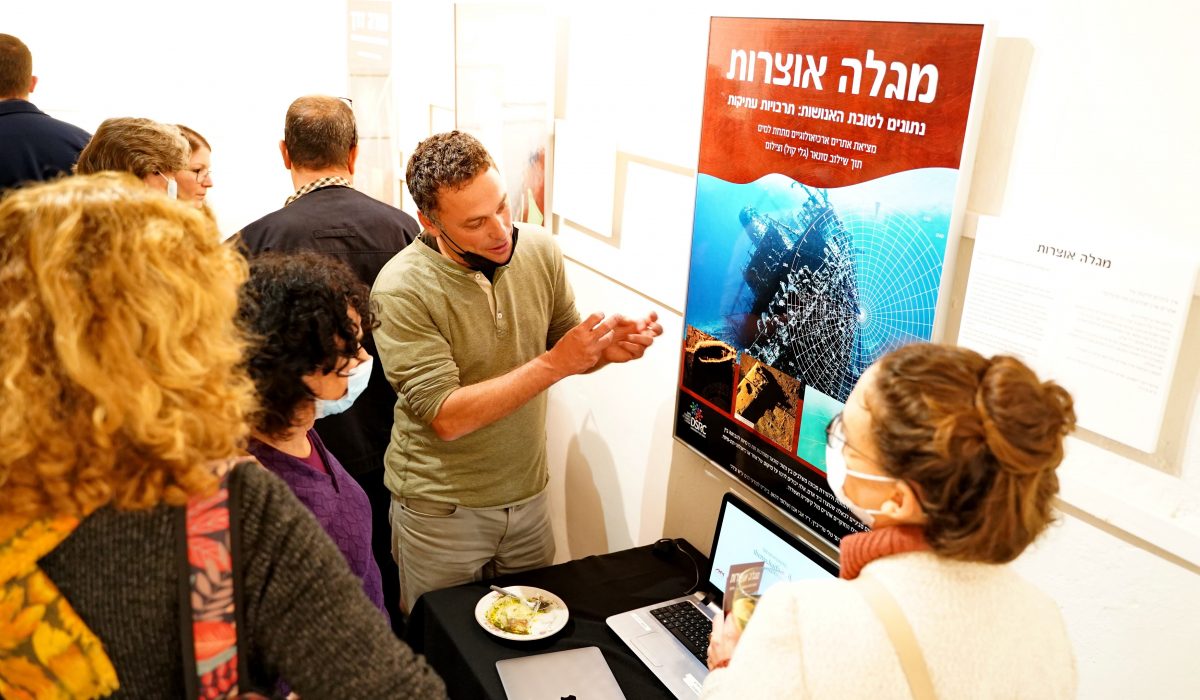
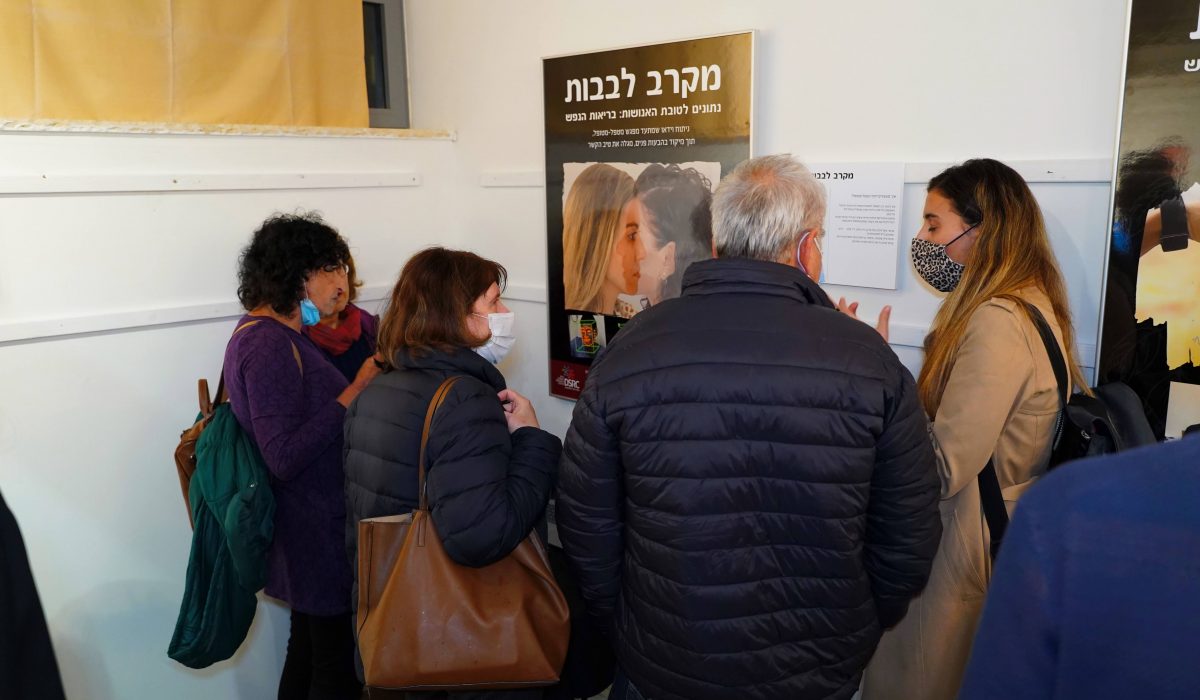
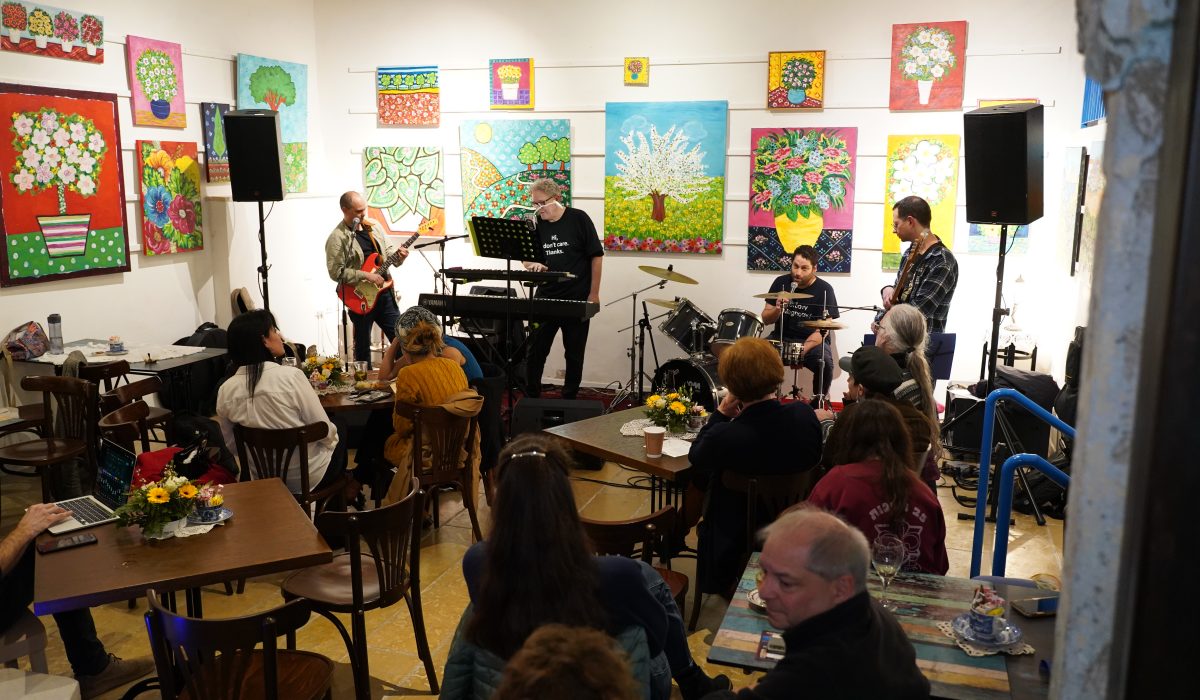
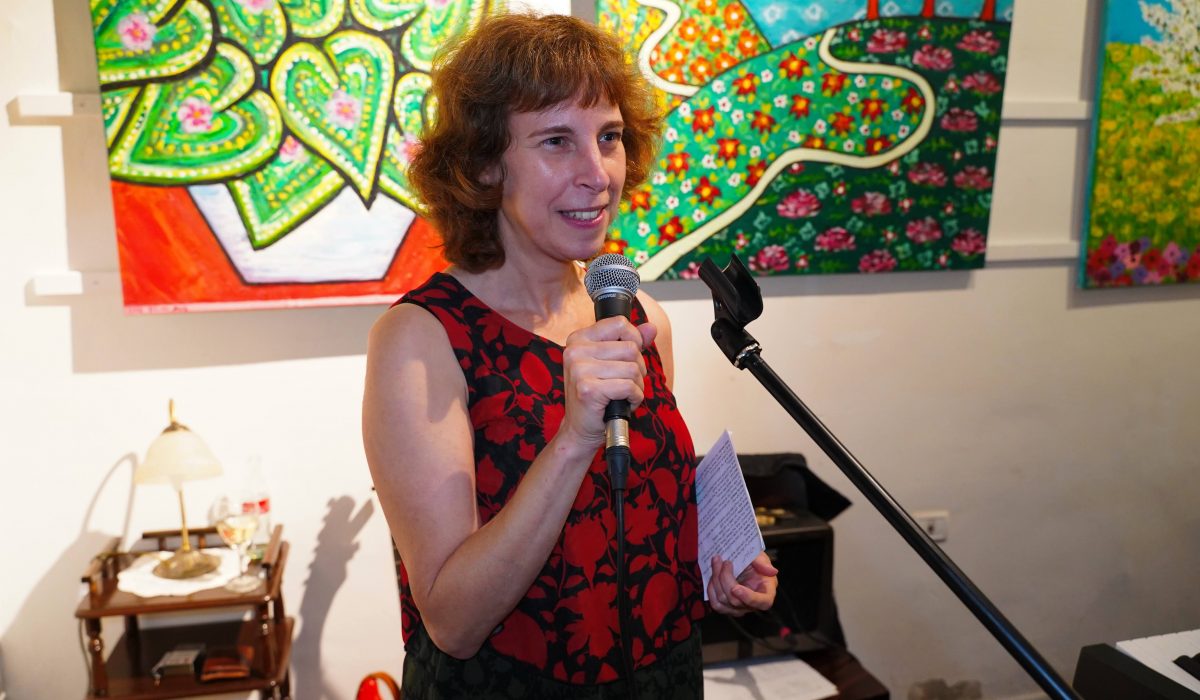
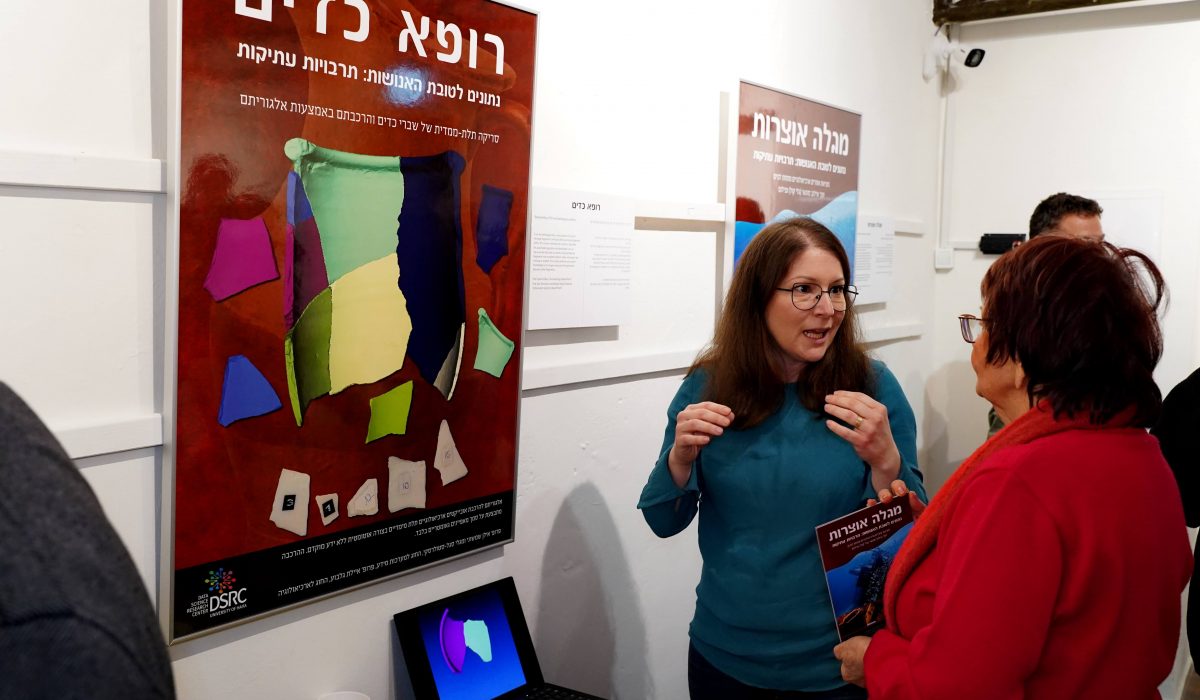
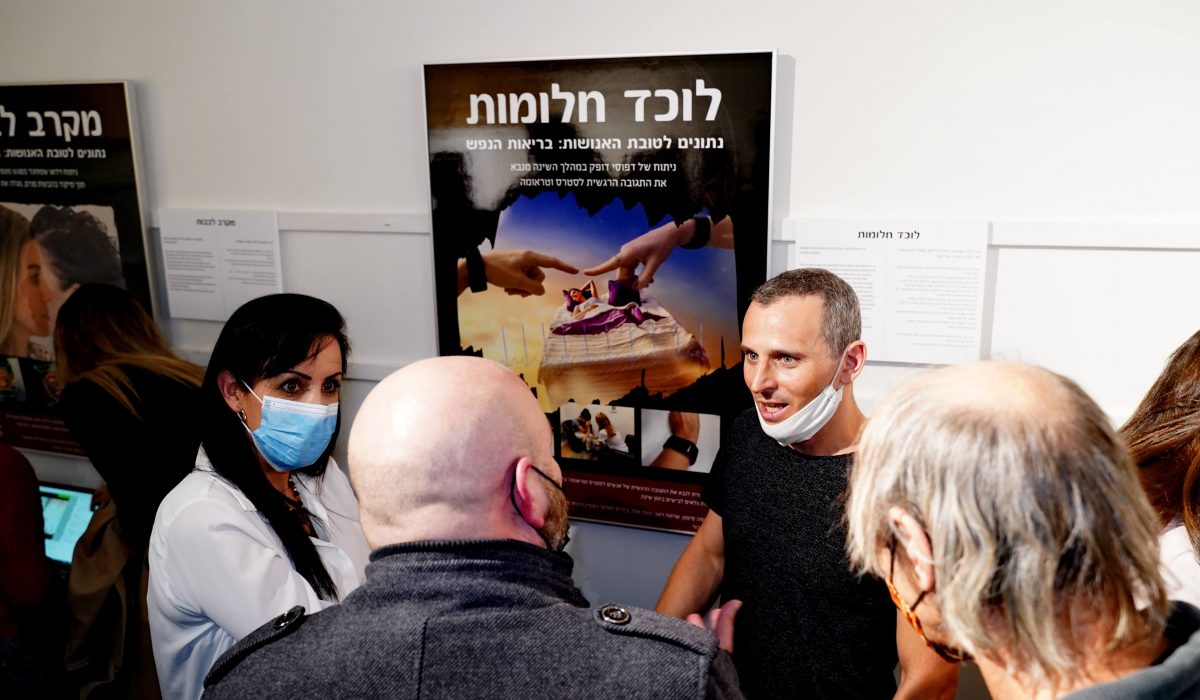










We had amazing three days of exhibition, starting with a festive launch evening the include live performance of “The Scrollers”, happy bar and delicious buffet and of course six great exhibits which use different art forms to describe researches that combine data science methods with subjects and fields that help society: mental health and ancient cultures. So many people came to hear all the information and explanations from the researchers and students themselves who work on those fascinated projects. The energies of the first evening were amazing, and it continued with two more relaxed but still interesting and exciting days of the exhibition, in Friday and Saturday.
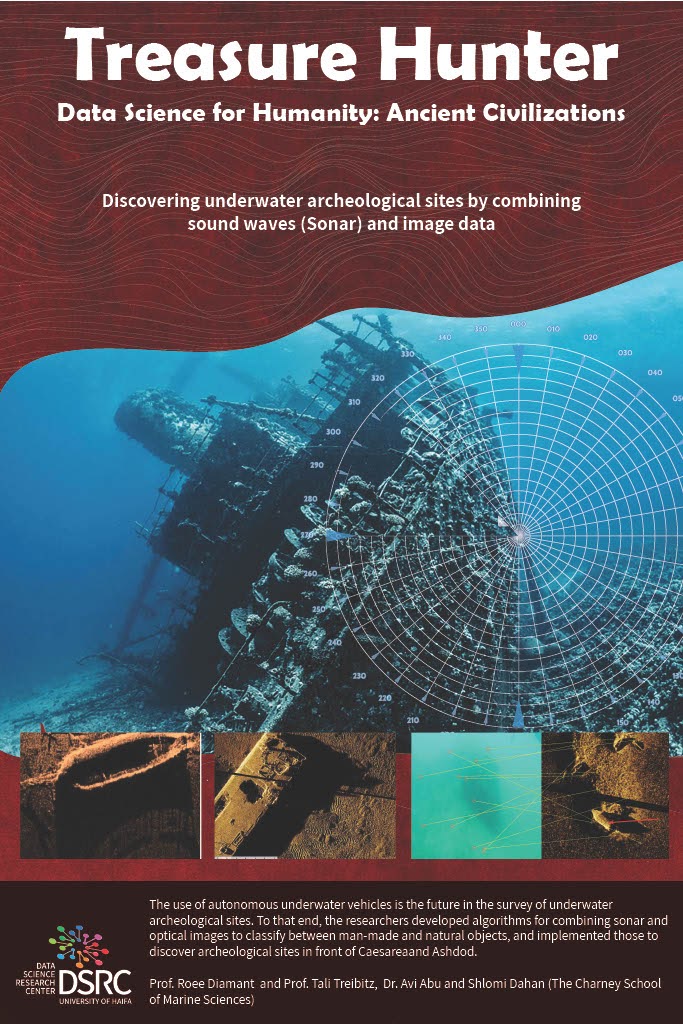
How to identify underwater archeological sites?
The advance in autonomous underwater vehicles has created a new era in marine archeology. One that allows researchers to go farther and deeper.In this project, we have developed novel algorithms to separate between natural objects like rocks to man-made objects as found in archeologic sites. To improve detection, our algorithms merge data from hugh resolution optical cameras with data from long range scanning sonar. We tested our solution in the Caesarea area, and managed to identify wracks and man-made objects. In the example we show an optical and sonar image pair for an archeological finding. The arrows mark the matching points between the two modalities.
Prof. Roee Diamant and Prof. Tali Treibitz (The Charney School of Marine Sciences)

Reassembly of 3D archaeological artifacts
In an archaeological site a vast amount of cultural heritage fragments are found. We scan those fragments with a 3D scanner and keep the results in data files. An automated algorithm we developed runs on the scanned data and succeeds to reassemble the fragments into complete objects while some parts are missing or eroded. This is done without any a priori knowledge on its shape using only the geometric features of the fragments.
Prof. Ayelet Gilboa (Archaeology department); Prof. Ilan Shimshoni and Magali Segal Stolarsky (Information Systems Department)

Idetifying the topics discussed in ancient texts?
The emotions, opinions and worldviews of people living two thousand years ago are known to us only through the words they wrote and the artifacts they produced. But ancient literatures are vast, written in many different languages, and can usually be understood only by experts. So how can laypeople and experts navigate these literatures and locate topics of interest to them? We invented a new method to suggest topic tags for every sentence, paragraph or page of an ancient text. The method works on all ancient languages. The automatic topic tagging helps us locate topics in ancient literatures, and also visualize how topics are connected to each other in the ancient texts.
Dr. Moshe Blidstein (Department of General History); Prof. Daphne Raban (School of Business Administration); Gabi Tartakovsky (Information and Knowledge Management Program)
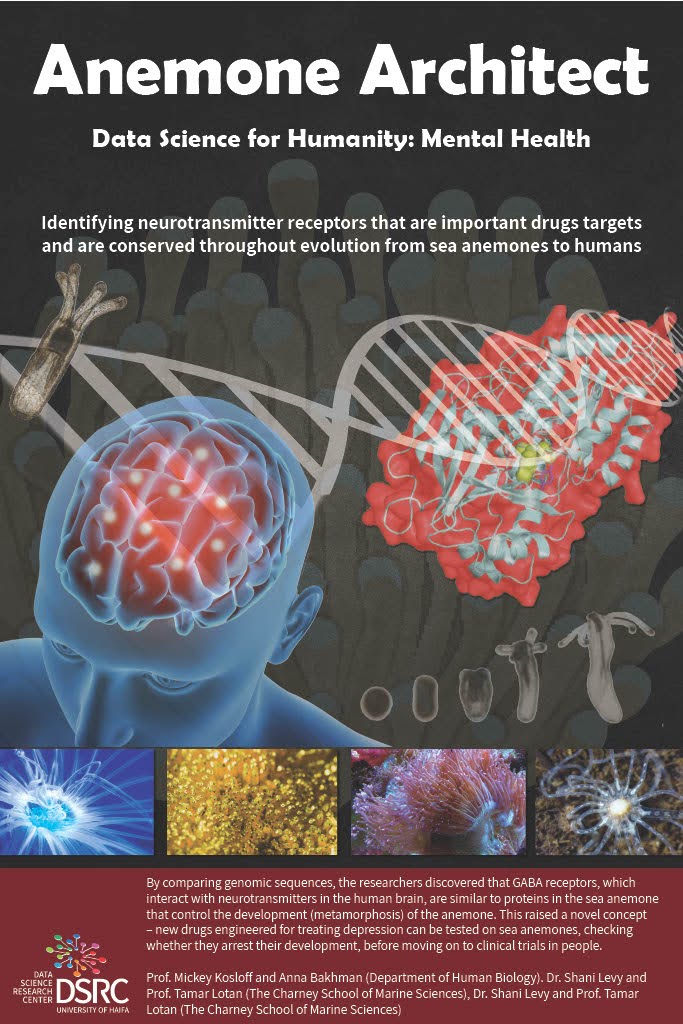
How to find new drugs that affect the brain using animals with no brain?
To find new drugs that affect people’s brains, such as drugs for depression, one tests them first in the lab in test tubes (“in vitro”), and then in animals (“in vivo”). Can we test drugs in the sea anemone, which has a nervous system but no brain? We searched for DNA sequences in the sea anemone that are similar to the human receptor, then checked using 3D computational analysis and in the lab whether the drug can affect the sea anemone receptor. We discovered the drug can indeed bind to the receptors in the sea anemone’s nerve cells, inhibiting its development from a freely-moving larva to a sessile polyp.
Dr. Mickey Kosloff and Anna Bakhman (Department of Human Biology); Dr. Shani Levy and Prof. Tamar Lotan (The Charney School of Marine Sciences)
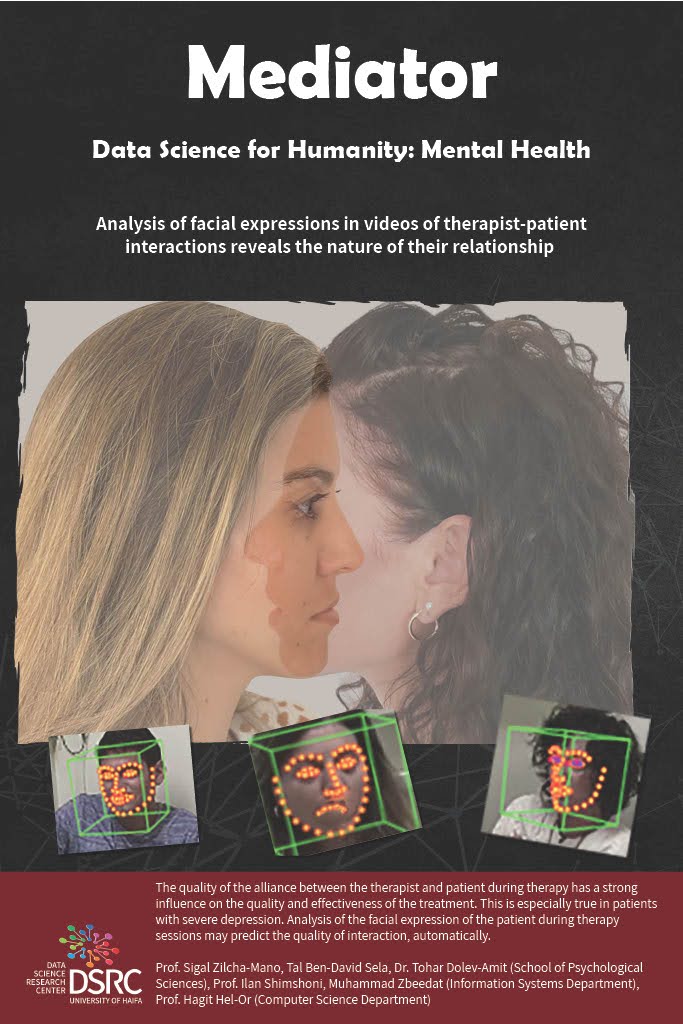
How to improve patient- therapist relationships?
The nature of the therapist-patient relationship affects the quality of treatment and its effectiveness, especially among patients suffering from depression. We have developed a video analysis algorithm that emphasizes facial expressions and can detect the nature of the relationship automatically in real time.
Prof. Sigal Zilcha-Mano, Tal Ben-David Sela, Dr. Tohar Dolev-Amit (Department of Psychology) Prof. Ilan Shimshoni, Muhammad Zbeedat (Department of Information Systems); Prof. Hagit Hel-Or (Department of Computer Science)
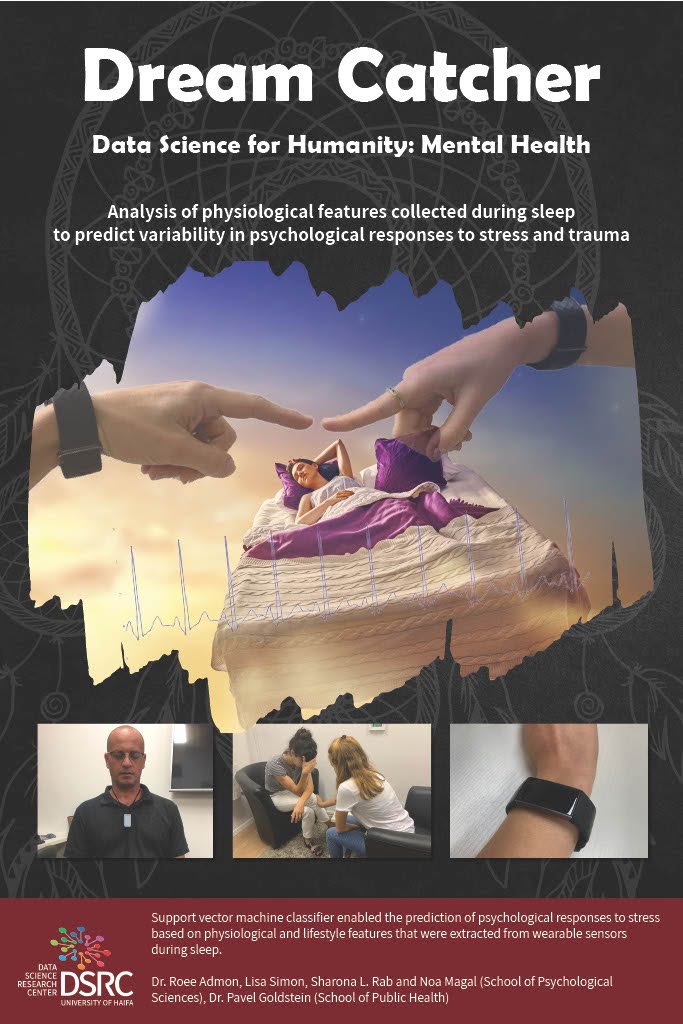
Sleep biomarkers for stress resilience vs. vulnerability.
This project aims to identify biomarkers of resilience vs. vulnerability to stress based on physiological data that is acquired passively using wearable sensors during sleep. The identification of biomarkers could help develop personalized treatment plans for preventing stress psychopathology. More than 150 healthy adult participants have already completed the study and a machine learning model was able to predict variability in their stress levels with 80% accuracy based on their physiological data. Current efforts are directed towards acquiring data from psychopathological populations.
Dr. Roee Admon (School of Psychological Sciences); Dr. Pavel Goldstein (School of Public Health)
Thank so much to the wonderful partners in cafe-gallery Kibutz Galuyot 91, to all the researchers and students of the amazing projects that took part of the exhibition, and of course to everyone who came to be part of this great event.
See you in our next popup! DSRC Team
You can see all the photos here: https://drive.google.com/drive/folders/12CRi2vbxtbAUjv7pFq-l4QyD4mYFnWv7
PDF of the posters here: https://drive.google.com/file/d/18ejsLb4PbK-e3R991o7802mIR0UtG5ig/view

